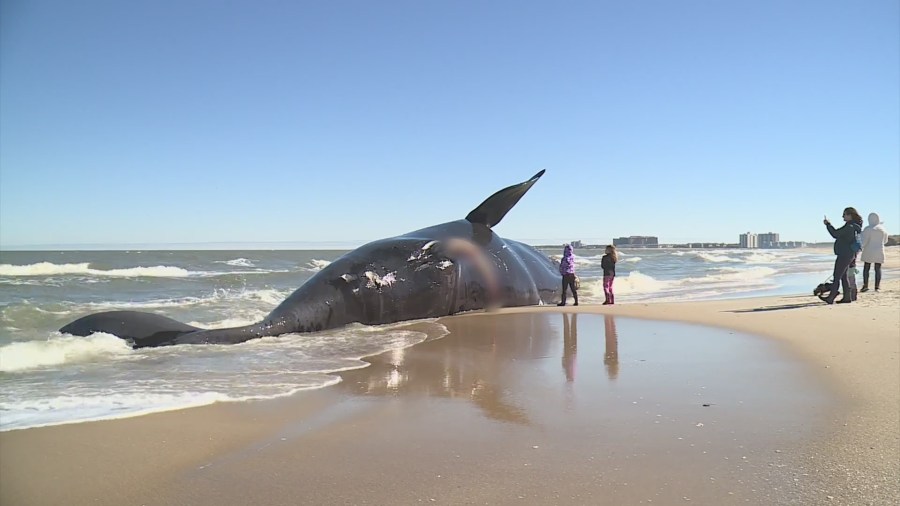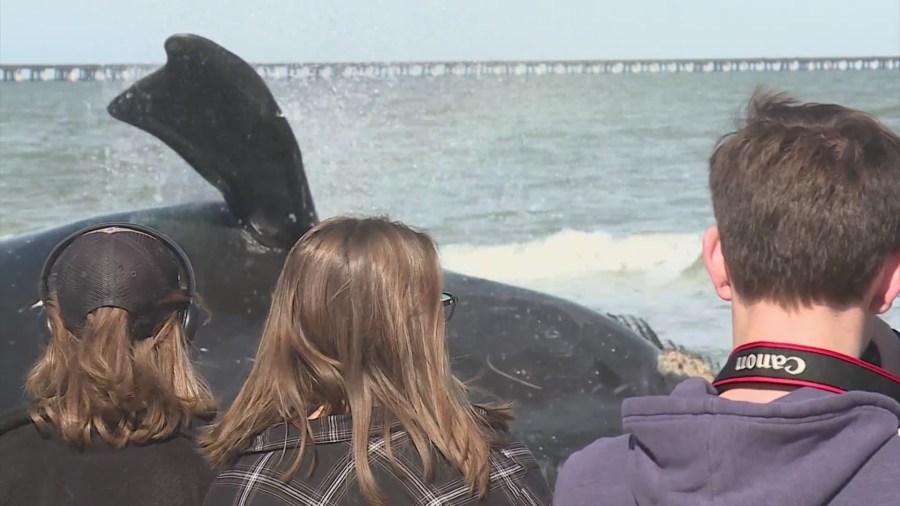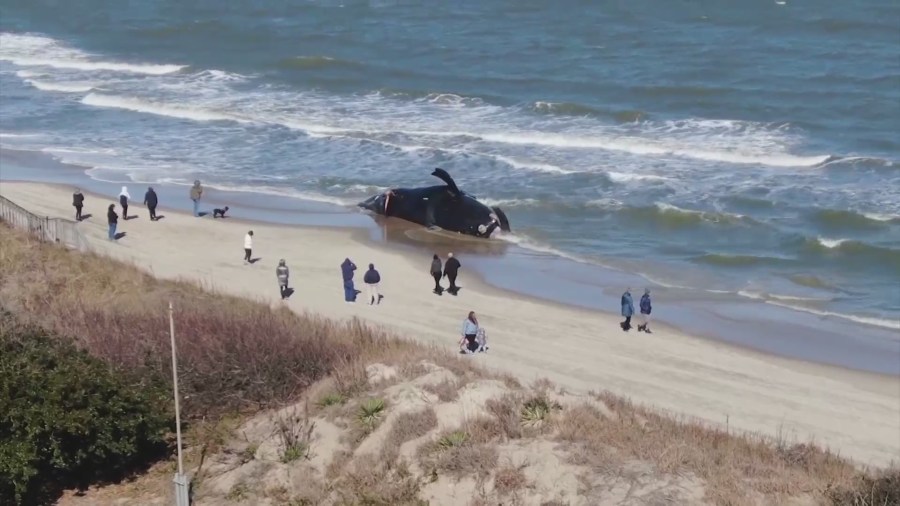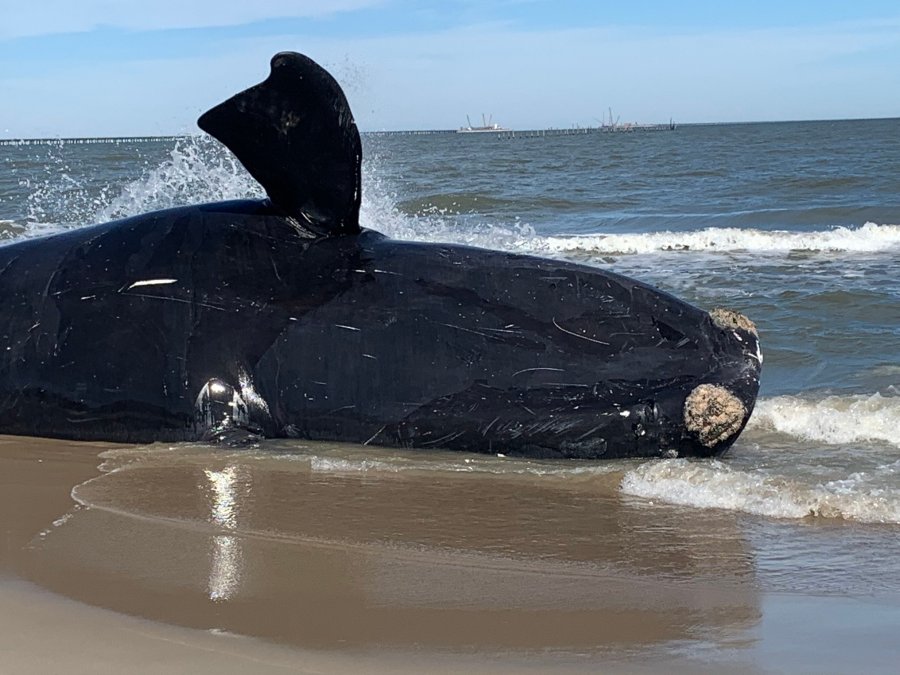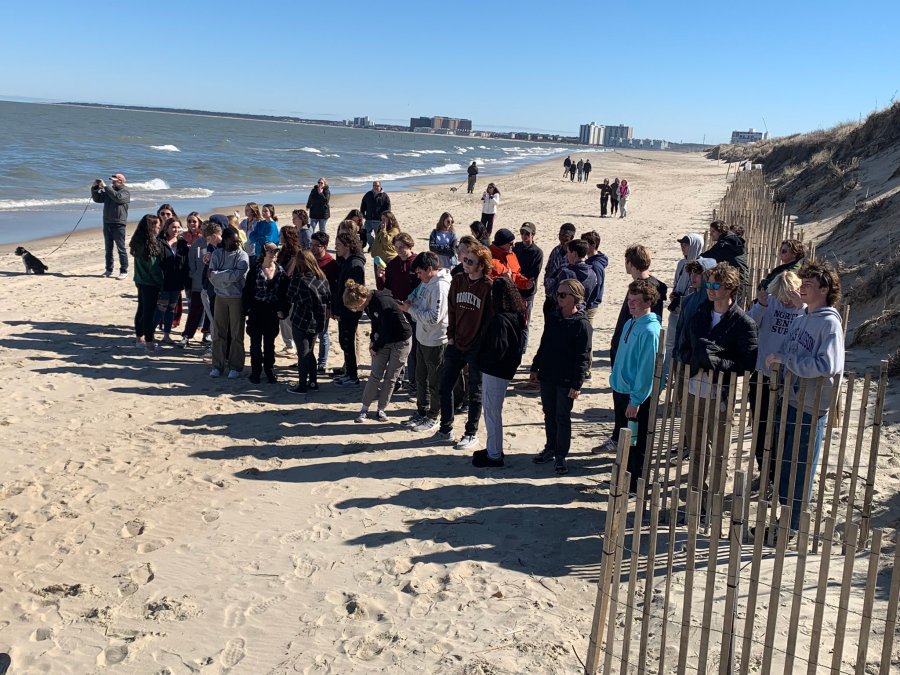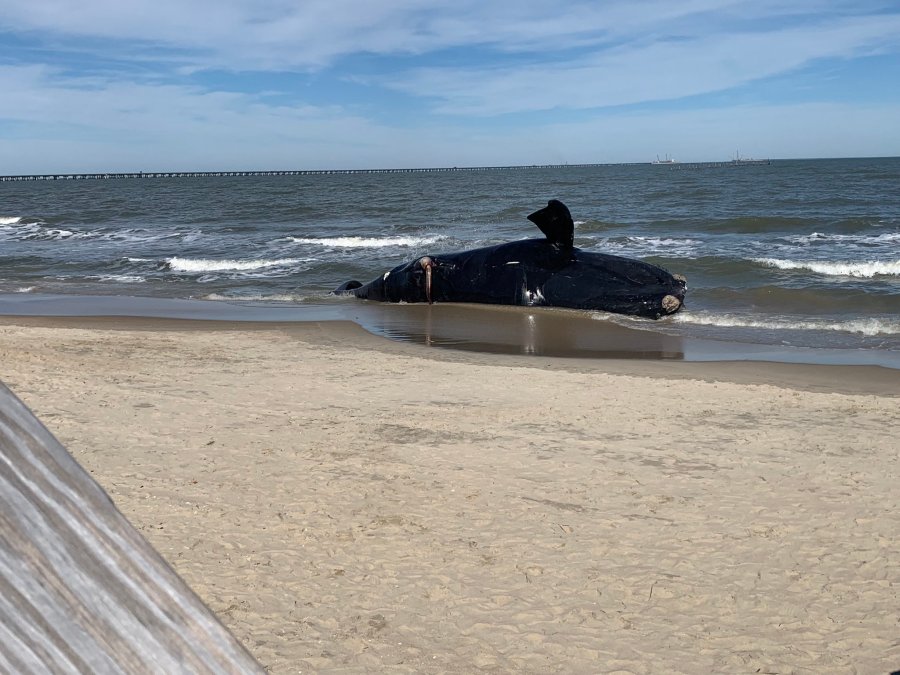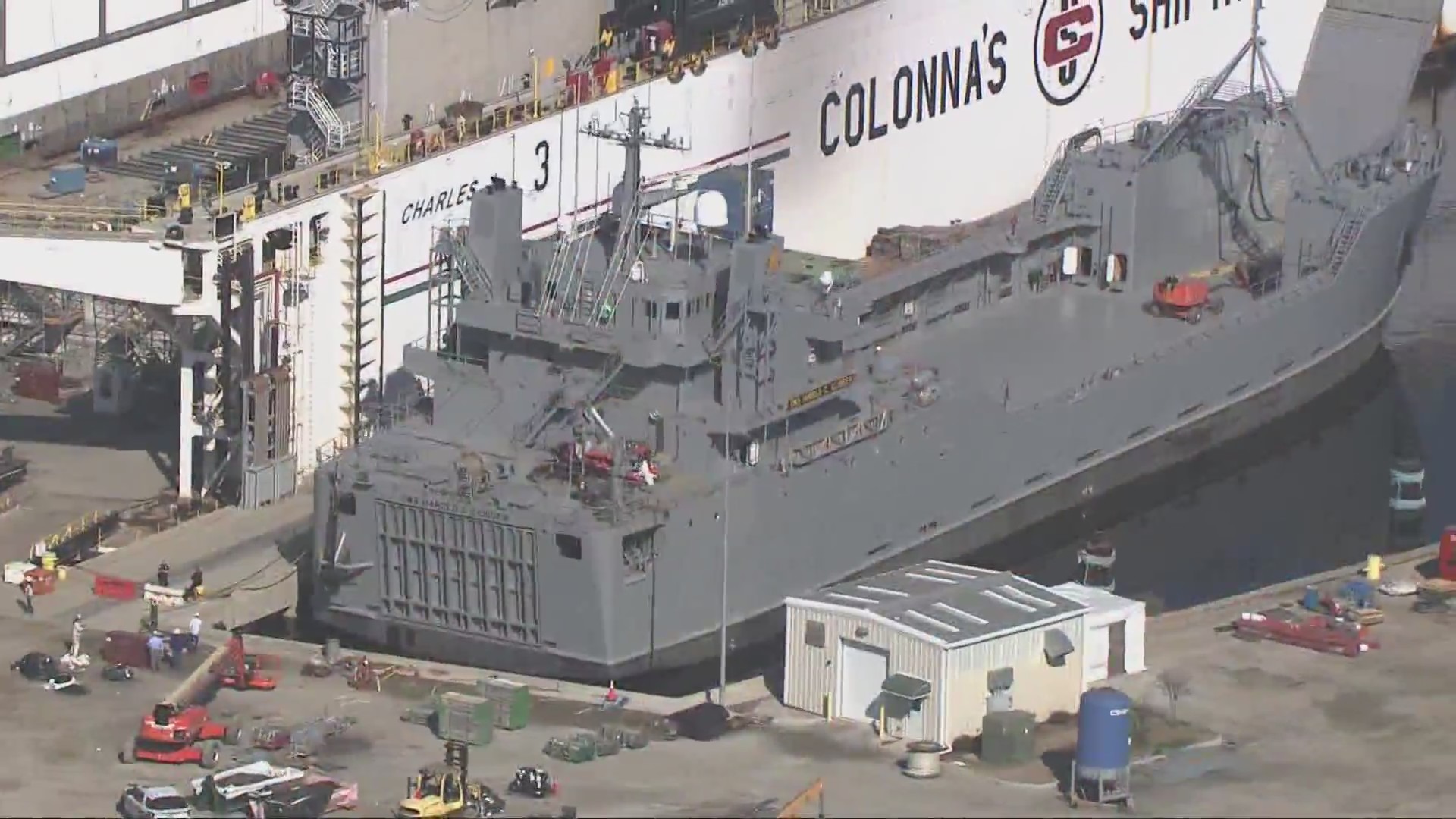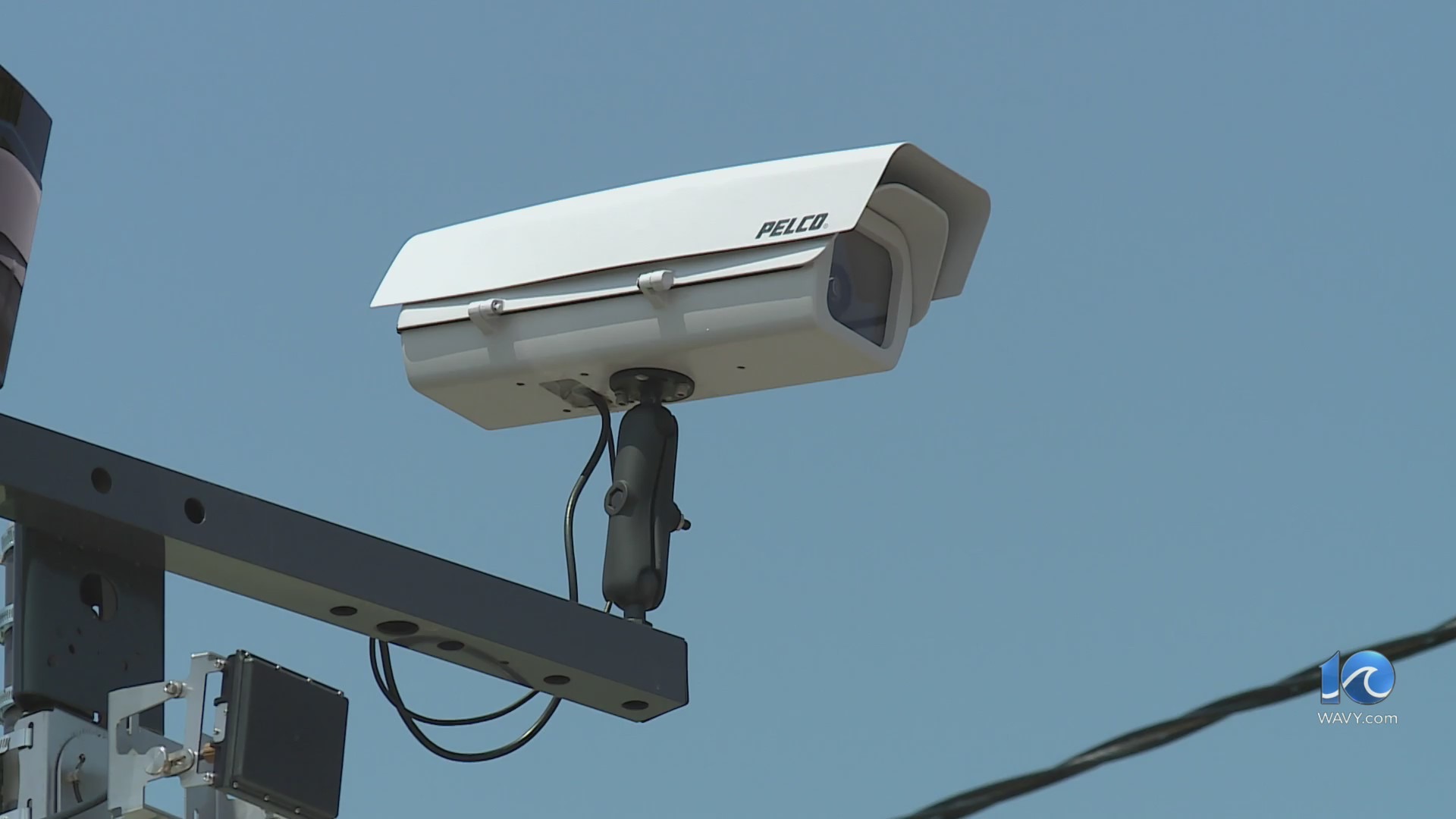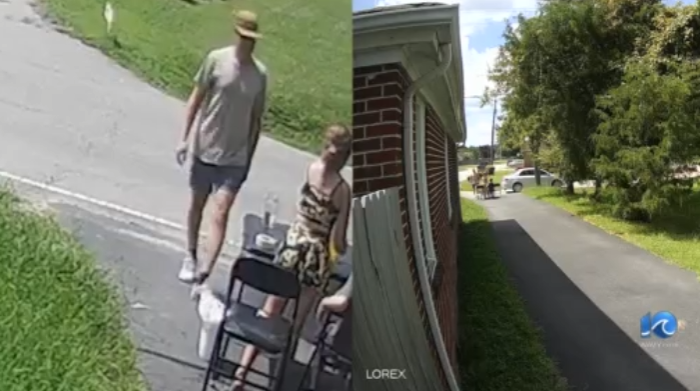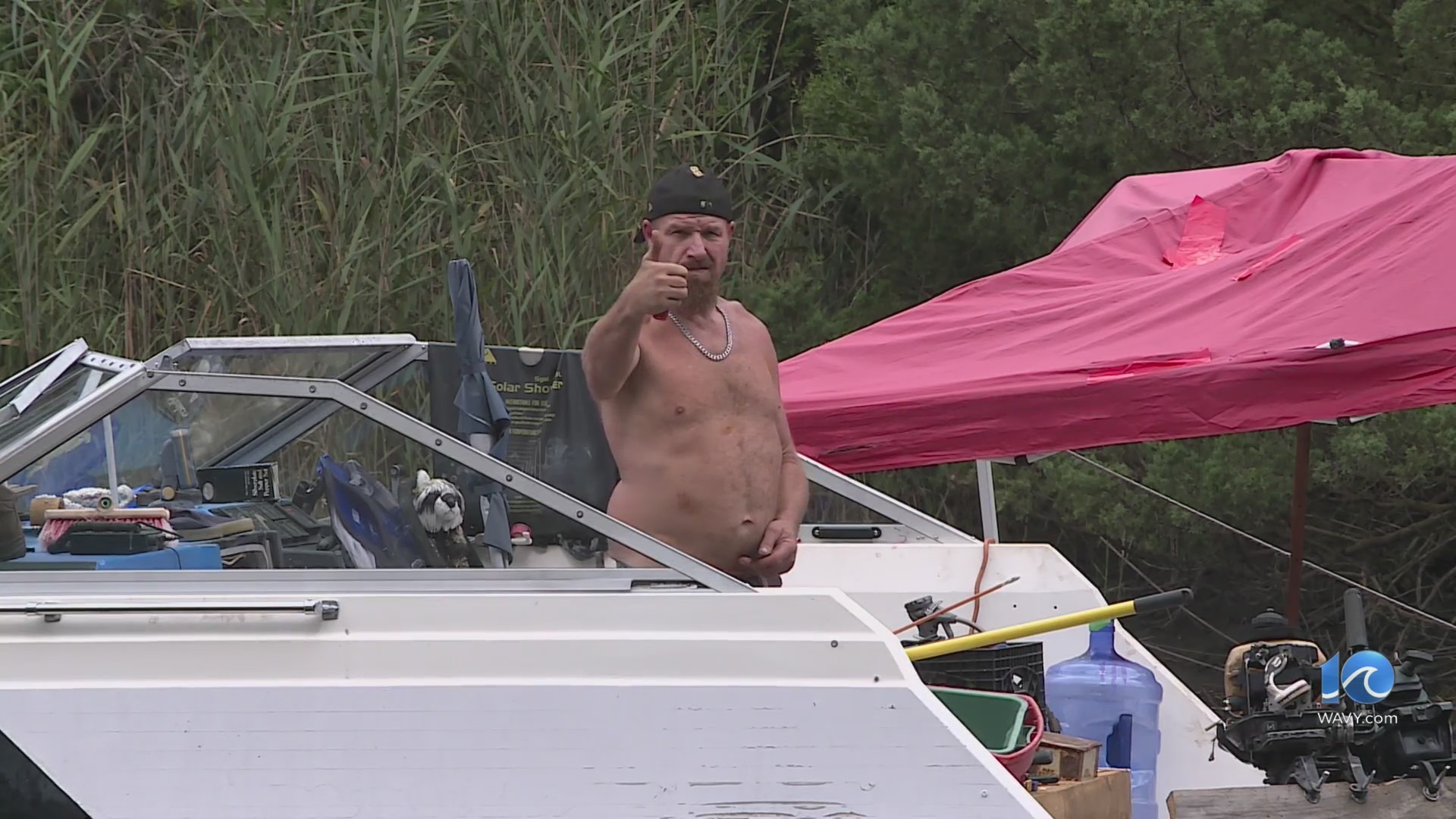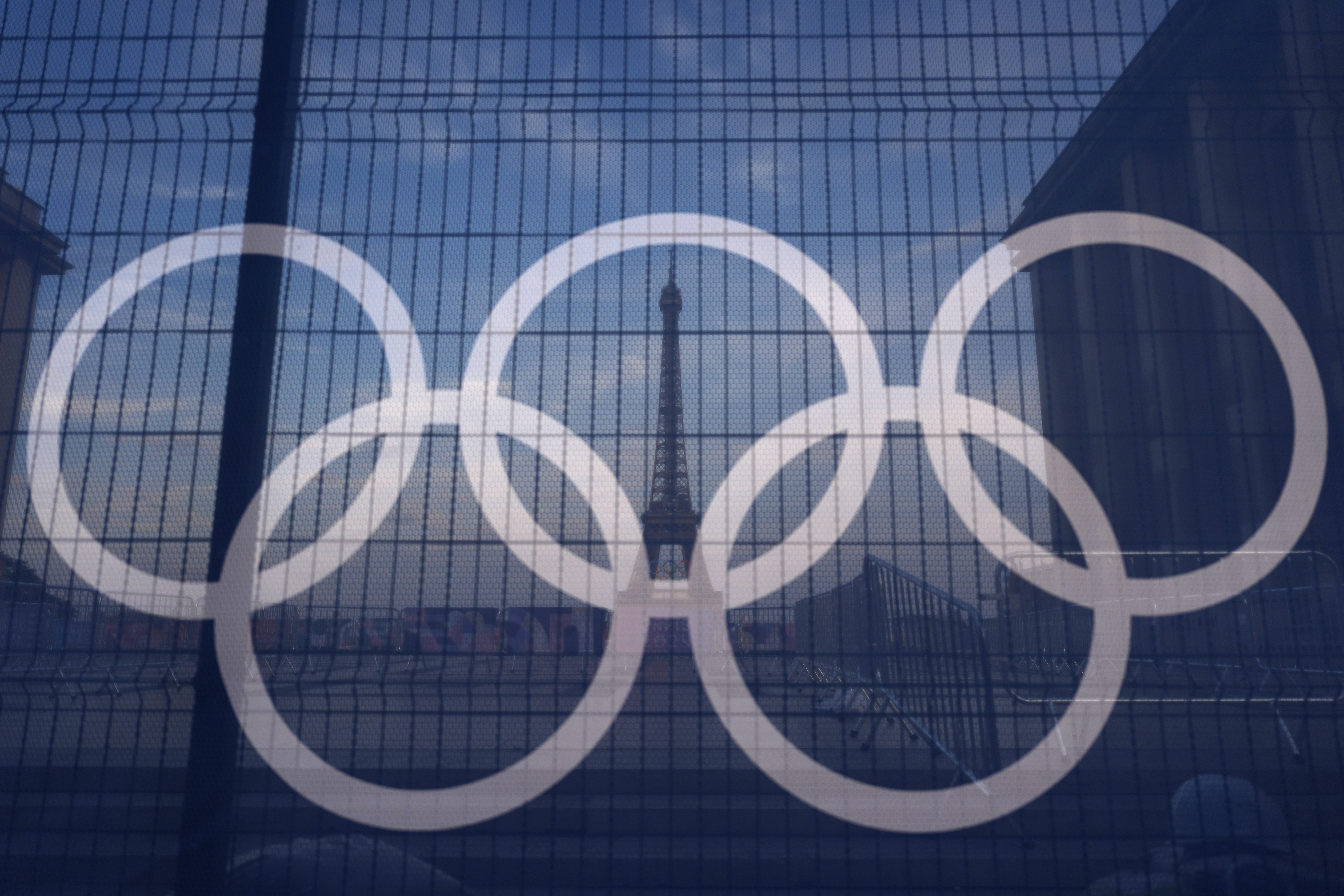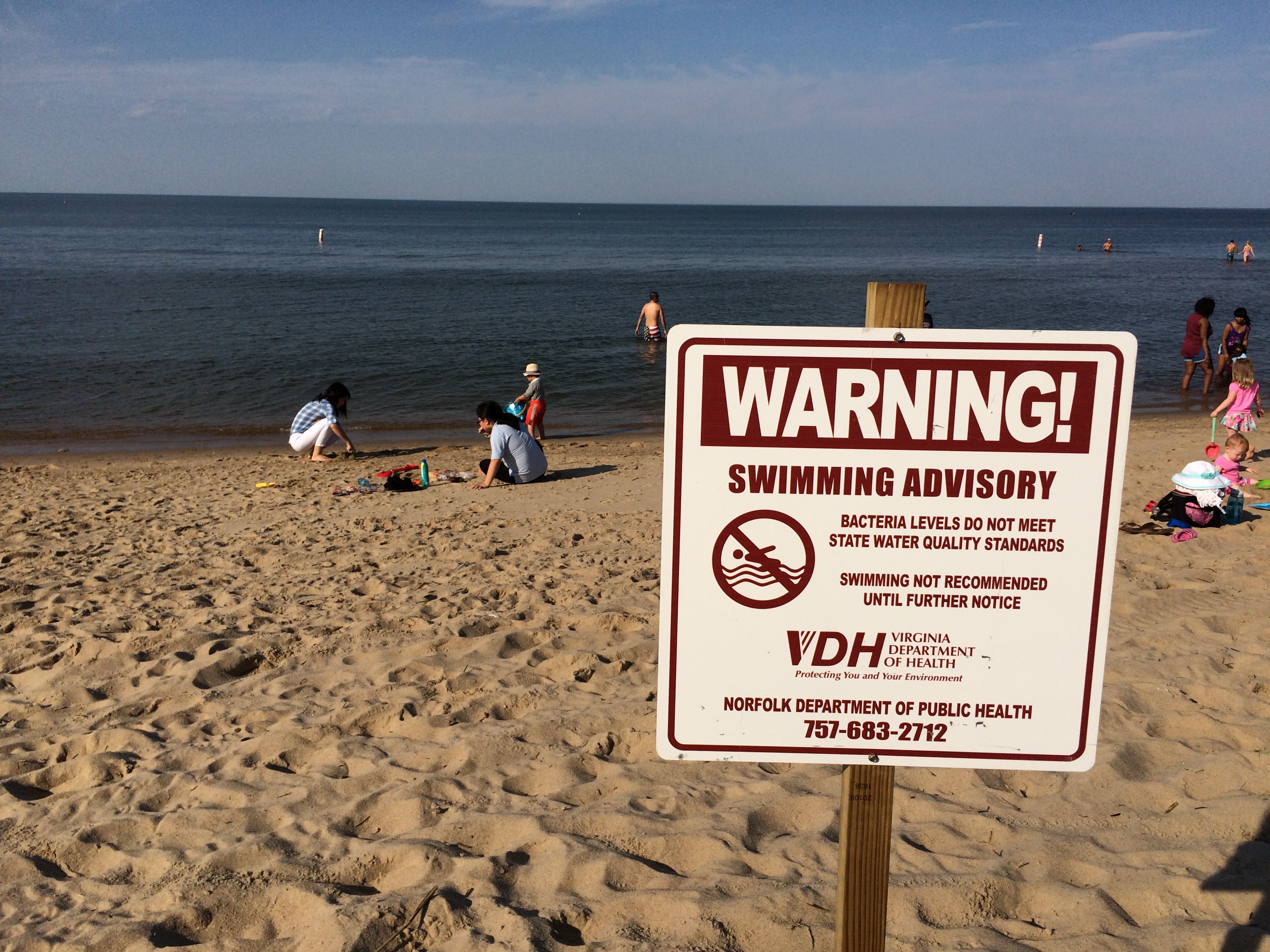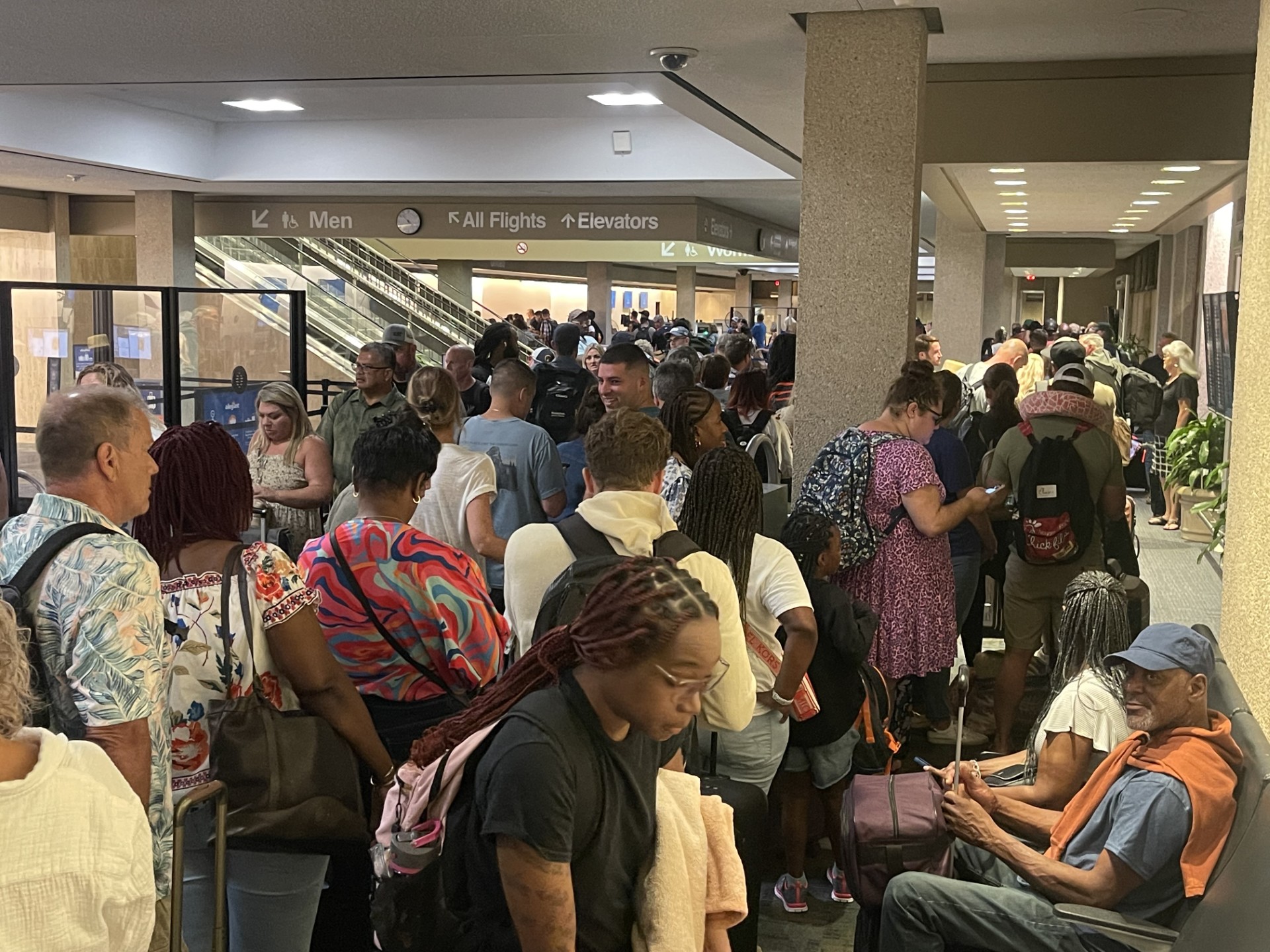** EDITOR’S NOTE: WAVY originally reported that NOAA confirmed the whale was not hit by a vessel or entangled in fishing gear, but this was reported before the necropsy was completed. On Wednesday, NOAA confirmed the whale suffered a catastrophic blunt-force traumatic injury, consistent with a vessel strike.
VIRGINIA BEACH, Va. (WAVY) – There’s another beached whale mystery on the bay side of Virginia Beach.
The National Oceanic and Atmospheric Administration said it’s the third of its kind in a week.
Drone 10 flew over the beach Monday and captured video of the animal on the sand, between the Lesner Bridge and the Chesapeake Bay Bridge Tunnel.
The North Atlantic right whale has been identified as a 20-year-old, 43-foot male; and it could weigh up to 70 tons.
The beached right whale became a classroom Monday for about 30 students from Virginia Beach City Public Schools’ Environmental Studies program that meets nearby at the Brock Environmental Center. A few homeschooled students also came out to get some hands-on learning.
“We like to think of this as an extension of our classroom, with any opportunity to create hands-on non-passive learning is important for our students to understand what’s going on in the world around us,” said teacher Chris Freeman.
Also on the beach were homeschoolers Amber and Willa Petry-Johnson, with their mother, who is also their teacher.
“It washed up on the sand, and it died because it was stuck,” Willa said.
The details on the right whale’s death are still unknown.
“We need to get the results of the necropsy,” said environmental studies student Lexi Bradshaw. “I think it will be interesting to see if any of the cases are related in any way.”
WAVY originally reported that NOAA confirmed the whale was not hit by a vessel or entangled in fishing gear.
After a necropsy report, the NOAA confirmed the whale suffered a catastrophic blunt-force traumatic injury, impacting a large portion of the vertebral column. The injuries were consistent with a vessel strike, including multiple vertebral fractures and separations that would have resulted in death shortly after the injury.
“Right whales, there are only 300 to 350 left in the whole world, so when you have one wash up on shore it is really sad,” said student Molly Jones.
The North Atlantic right whale was listed under the Endangered Species Act in 1970 and is now critically endangered.
The right whale got its name due to it being the right type of whale for hunters, because they moved slowly and would float after being killed.
Today there are only 70 breeding females.
NOAA said North Atlantic right whales have been experiencing an Unusual Mortality Event since 2017. The species is dying faster than they can reproduce.
WAVY learned of the most recent local case on Sunday, Feb. 12.
A necropsy is expected to take place Tuesday. NOAA has not said whether there is a common reason for the strandings. They have not decided yet how to dispose of the whale.
The City of Virginia Beach issued an advisory Jan. 30 on behalf of NOAA Fisheries Services, warning that critically endangered North Atlantic right whales had been spotted off the coast of the resort city.
The Virginia Aquarium is encouraging mariners to slow down to 10 knots through April 30, when the whales are most likely to be in this area. Entanglement in fishing gear and vessel strikes are the leading causes of serious injuries to right whales.
You can report a whale sighting to NOAA by calling 866-755-6622. There’s also a free Whale Alert App that allows you to see where whales have been spotted and add your own sighting. Download in the App Store or get it on Google Play.
Just last week, on Feb. 7, the Virginia Aquarium Stranding Response Team assisted in bringing a dead humpback whale to shore in Virginia Beach near First Landing State Park. Heavy equipment was brought in to help move the whale so members of the response team could perform a necropsy to determine how the animal died. We’re still waiting on those results.
Continue to check WAVY.com for updates.
